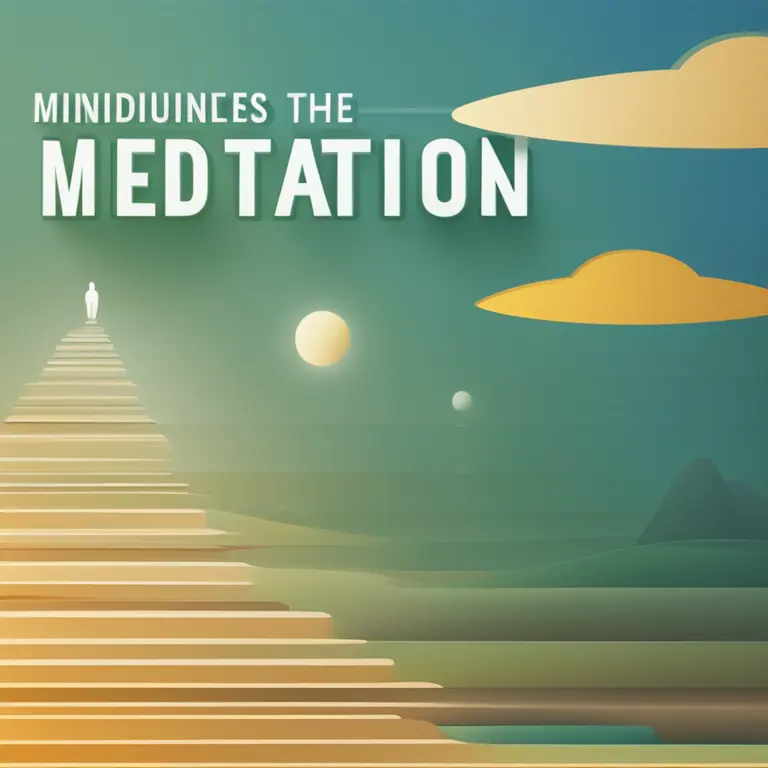
Mindfulness Meditation Vs. Traditional Meditation: Core Differences
Delve into the nuanced differences between mindfulness meditation and traditional meditation practices, clarifying concepts for enhanced personal wellness.
article by Hina Kurosawa
Defining Mindfulness Meditation
Mindfulness meditation is a practice derived from Buddhist traditions, focusing on the present moment without judgment. It's about tuning into your sensations, thoughts, and emotions in real-time, fostering a heightened awareness that can bring calm and clarity. This form of meditation encourages practitioners to observe their inner experiences with acceptance, gently bringing the mind back to the current experience whenever it wanders. Mindfulness can be applied not only during a dedicated sitting session but also integrated into daily activities, such as mindful eating, walking, or even listening.

Understanding Traditional Meditation
Conversely, traditional meditation, which encompasses a variety of practices across different cultures and religions, often involves concentration, contemplation, or the repetition of a mantra. This broader category may include practices like Transcendental Meditation, Zen, and yogic meditation techniques. Traditional forms frequently aim to transcend the self, quiet the mind, reach higher states of consciousness, or connect with the divine. These practices may require a more structured approach with specific postures, breathing techniques, or guided visualizations.

Nature of Practice
Mindfulness meditation is more open-ended and flexible compared to many traditional meditative techniques. In mindfulness, there's no specific focus other than the present moment, which can include any aspect of human experience. Traditional meditation methods might require focusing on a particular object, sound, or thought, often excluding external distractions to achieve a single-pointed state of concentration. This difference is crucial as it speaks to the underlying intention and approach that practitioners bring to their sessions.

Benefits and Goals
Both mindfulness and traditional meditation offer distinct benefits such as reduced stress, improved focus, and a deeper sense of wellbeing. However, mindfulness meditation is frequently recommended for cultivating emotional balance, resilience, and coping skills, particularly beneficial in therapeutic settings. In contrast, traditional meditation often seeks to foster spiritual growth and personal transformation, with some methods aiming for profound insight or enlightenment.

Adaptability in Modern Times
Mindfulness meditation has seen a surge in popularity, especially in the West, for its secular and adaptive approach, aligning well with contemporary lifestyles. It's been readily incorporated into mental health practices, education, and corporate wellness programs. Traditional meditation, while also adapting to modern contexts, retains a more spiritual or religious connotation, sticking closer to its historical roots and often requiring more dedicated practice time and formal learning from a teacher or tradition.
Choosing the Right Practice
Deciding between mindfulness and traditional meditation can depend on one's personal goals and life situation. For those looking to manage daily stress and develop a more responsive relationship with moment-to-moment experiences, mindfulness meditation might be the way forward. Alternatively, individuals seeking a structured path towards spiritual profundity or who enjoy ritual and discipline may gravitate towards traditional meditation practices. Understanding the differences can help tailor a personal meditative journey that resonates with one's needs and aspirations.
Published: 1/18/2024
Modified: 1/18/2024
More predictions
Come back here soon to learn more about yourself and your future


Mindfulness Meditation As A Tool for Anxiety Relief
Discover how mindfulness meditation can be a powerful tool for anxiety relief, fostering a sense of peace and well-being through simple, guided practices.


Mastering The Path Of Mindfulness Meditation
Discover the serene path of mindfulness meditation with this comprehensive guide designed to help you find inner peace and clarity.


A Beginner's Guide to Mindful Meditation Explained
Discover the essentials of mindful meditation to start your journey towards inner peace and heightened awareness with this beginner-friendly guide.